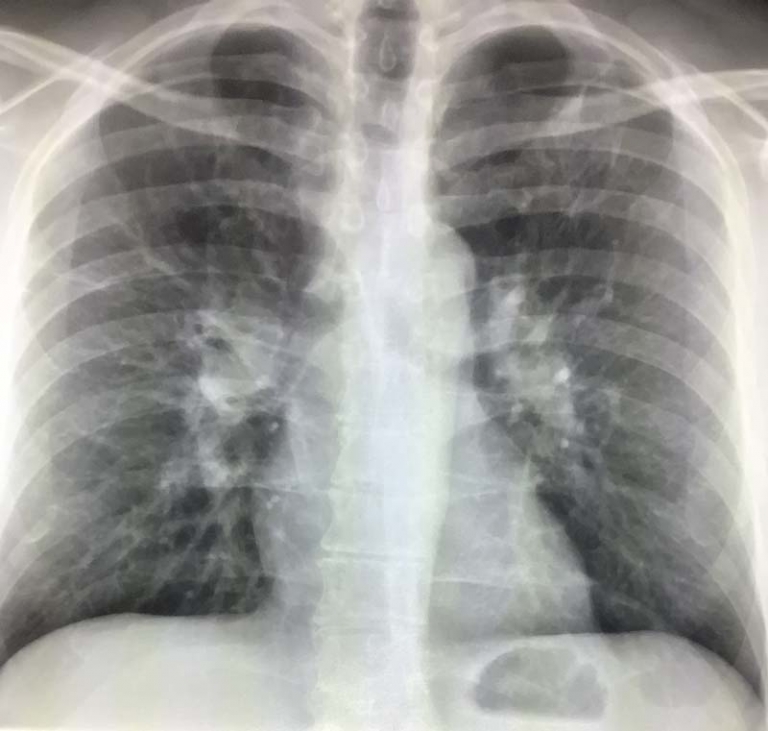Chest X-ray for Chest Pain
Chest X-ray is commonly ordered to look for potential causes of chest pain. Chest pain can be due to many conditions ranging from heart burn and broken rib to deadly conditions such as heart attack and clots in the chest.
What organs does a chest X-ray show?
A chest X-ray shows both lungs, the heart, the mediastinum and chest wall. We can also see the upper abdomen and spine.
Purpose of chest X-ray for chest pain
Chest X-ray is a quick and widely available test to start the search for causes of chest pain. Chest X-rays can diagnose pneumonia, collapsed lung, broken ribs to name a few.
What causes of chest pain can a chest X-ray diagnose?
We can see a collapsed lung, fluid in the chest, pneumonia, lung masses, and other lung abnormalities.
We can see masses in the chest. Aneurysms of the aorta can sometimes be seen.
Abnormalities of the chest wall like rib fractures.
Abnormalities of the spine like fractures.
What does a chest x ray show about your heart?
A chest X-ray can tell us the heart is enlarged. We can see calcifications of the valves. We can sometimes see findings that suggest heart failure.
Can a chest X-ray show a heart attack?
No. We can not see a heart attack on chest X-ray. We can sometimes see the effects of a heart attack like when the heart fails and there is fluid in the lungs.
Can a chest x-ray show heart blockage?
No, we can not see a blockage of the heart arteries on chest X-ray.
Does a chest x-ray show angina?
No. This is when you get chest pain from not enough blood flow to the heart.
Can a chest x-ray show heart failure?
We can sometimes see heart failure when we see an enlarged heart with fluid in the lungs.
Can chest x-ray show heart inflammation?
No, chest X-ray can not show heart inflammation. We can only see the size of heart but little detail.
Can a chest X-ray show causes of shortness of breath?
Yes, some of the causes. We can see fluid in the lungs, collapsed lung, pneumonia, and cancer.
Can chest x-ray show lung cancer?
Yes, sometimes. We can often see lung masses on chest X-ray. Smaller nodules which can represent early lung cancer may not be seen.
What causes of chest pain does chest X-ray miss?
Conditions like pulmonary embolism, aortic dissection and heart attack can not be diagnosed and are invisible on X-ray. A normal chest X-ray therefore does not diagnose many important and deadly conditions.
Can a chest X-ray make a specific diagnosis for chest pain?
A chest X-ray is best interpreted in the context of the patient’s symptoms. For example, a white area at the bottom of the lung is most likely pneumonia in the setting of cough and fever, while it may be a tumor if the patient has had chronic symptoms and is a smoker.
In other cases, a specific diagnosis can be made like when there is a pneumothorax. That is, when there is air between the chest wall and lung which causes collapse.
A fracture of a rib or other bones in the chest can often be made.
Fluid between the lung and chest wall called a pleural effusion is often seen.
Heart failure can be diagnosed when there is a large heart, edema in the lung and pleural effusion.
A cancer can sometimes be made when a mass is seen in the chest or there are enlarged lymph nodes.
What other testing is done for chest pain?
A chest X-ray is just a start and may provide a diagnosis but certainly does not rule out many important conditions. Your doctor will therefore have to pursue further testing based on all the information and testing. This may include blood work, chest CT, ultrasound of the heart, angiogram to name some.
Chest X-ray for chest pain: summary
Chest X-ray allows us to make many important diagnosis that can cause chest pain. There are however some diagnosis which are not visible on chest X-ray. Some diagnosis that can cause chest pain will require a clinical diagnosis, blood work and further imaging to diagnose.

